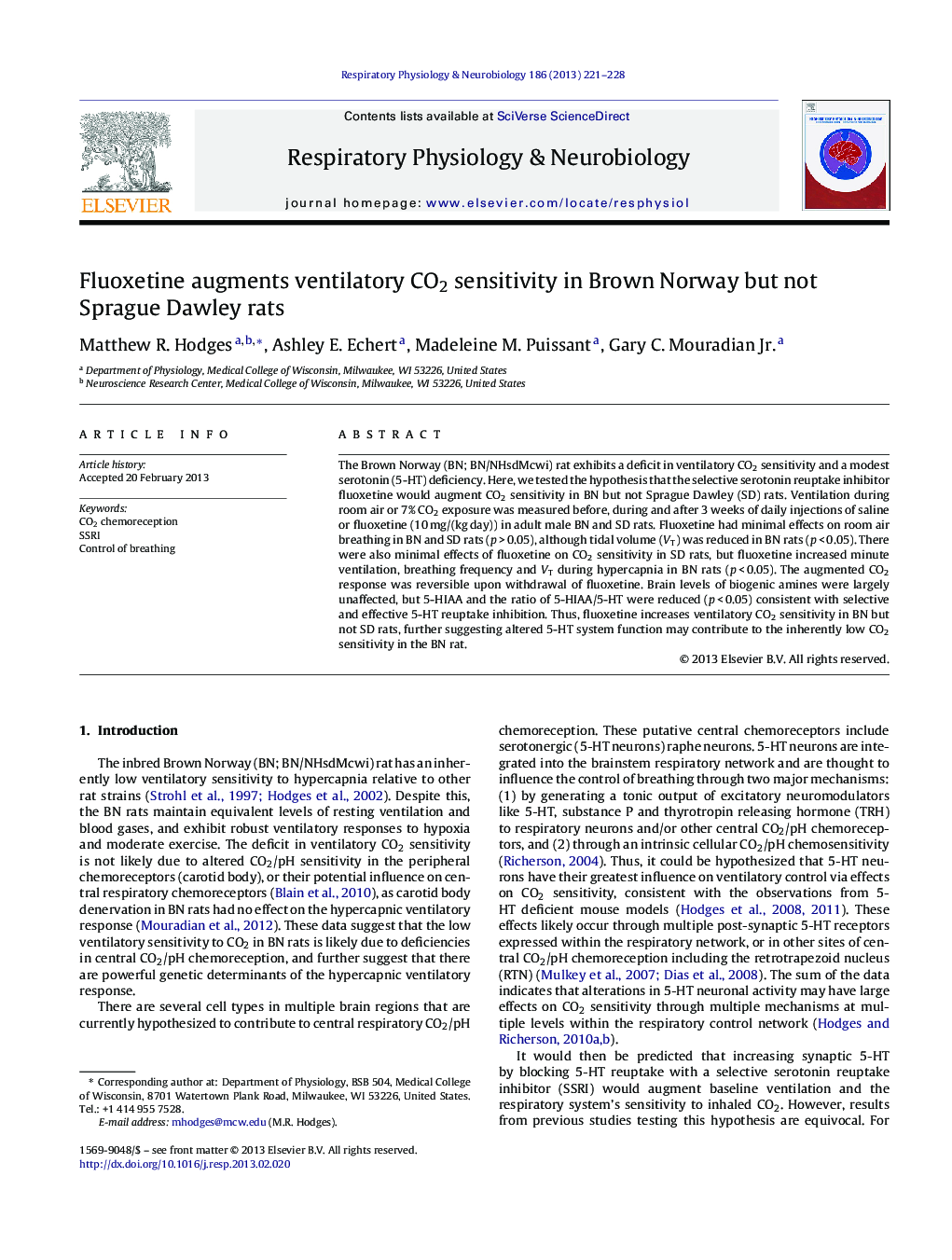| Article ID | Journal | Published Year | Pages | File Type |
|---|---|---|---|---|
| 2847215 | Respiratory Physiology & Neurobiology | 2013 | 8 Pages |
The Brown Norway (BN; BN/NHsdMcwi) rat exhibits a deficit in ventilatory CO2 sensitivity and a modest serotonin (5-HT) deficiency. Here, we tested the hypothesis that the selective serotonin reuptake inhibitor fluoxetine would augment CO2 sensitivity in BN but not Sprague Dawley (SD) rats. Ventilation during room air or 7% CO2 exposure was measured before, during and after 3 weeks of daily injections of saline or fluoxetine (10 mg/(kg day)) in adult male BN and SD rats. Fluoxetine had minimal effects on room air breathing in BN and SD rats (p > 0.05), although tidal volume (VT) was reduced in BN rats (p < 0.05). There were also minimal effects of fluoxetine on CO2 sensitivity in SD rats, but fluoxetine increased minute ventilation, breathing frequency and VT during hypercapnia in BN rats (p < 0.05). The augmented CO2 response was reversible upon withdrawal of fluoxetine. Brain levels of biogenic amines were largely unaffected, but 5-HIAA and the ratio of 5-HIAA/5-HT were reduced (p < 0.05) consistent with selective and effective 5-HT reuptake inhibition. Thus, fluoxetine increases ventilatory CO2 sensitivity in BN but not SD rats, further suggesting altered 5-HT system function may contribute to the inherently low CO2 sensitivity in the BN rat.
► Brown Norway (BN) rats have a specific deficit in CO2 chemoreception and low brain serotonin (5-HT). ► Here we determined if increasing brain 5-HT with fluoxetine increases CO2 sensitivity in BN rats. ► CO2 sensitivity was increased in BN but not Sprague Dawley rats despite equal doses of fluoxetine. ► HPLC measurements of neurochemicals confirm specificity and efficacy of drug in both strains. ► Thus, differential effects on CO2 sensitivity are due to altered 5-HT system function in BN rats.
